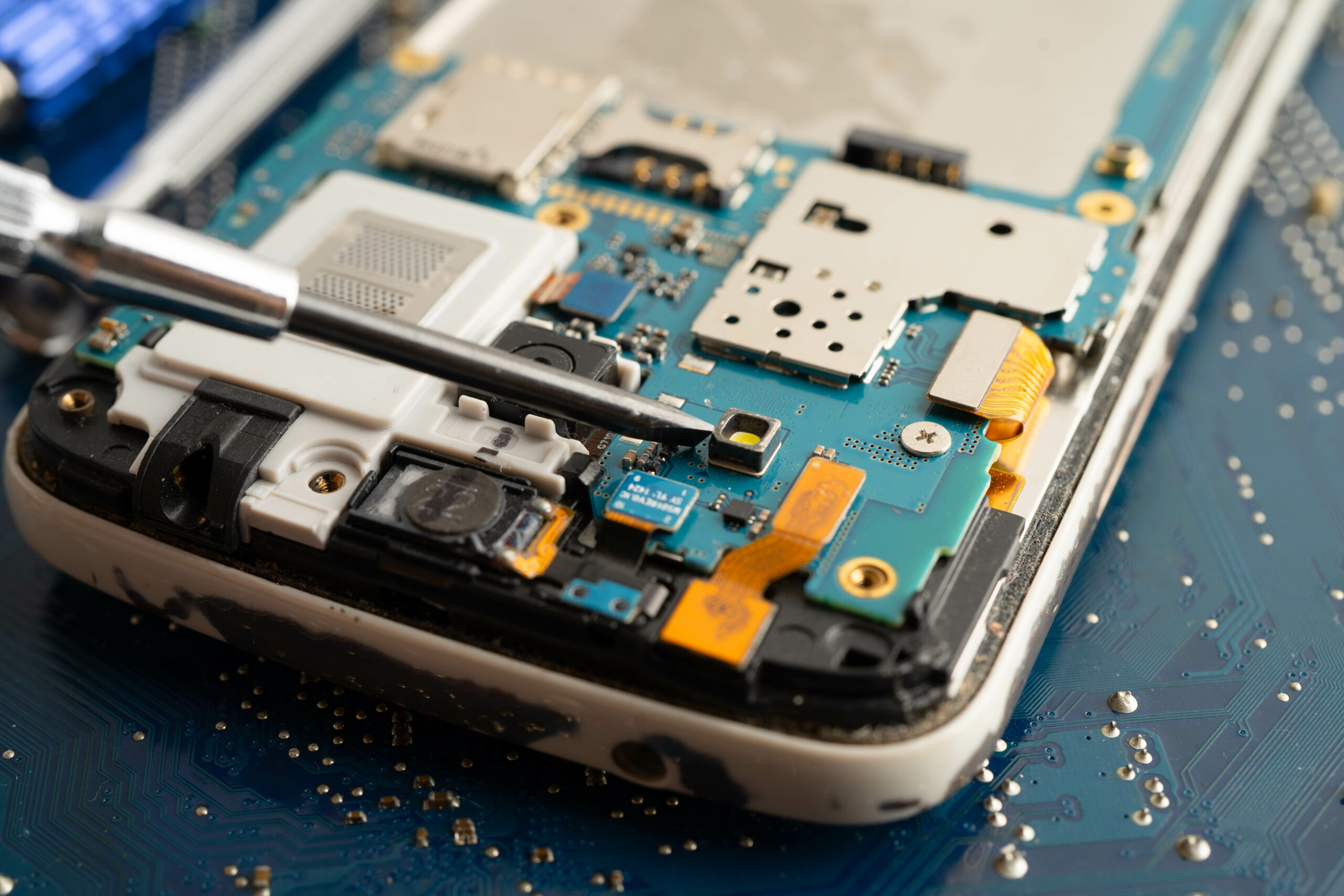A dynamic yet easy-to-use point of sale (POS) system for your repair shop will do wonders for customer satisfaction as well as your internal logistics. Common struggles for shop owners are often related to their purchasing systems and inventory integrations – inaccurate numbers, slow transactions, broken automations (or no automations). But with the right approach to their POS, owners, and managers can rest easy and focus on what matters – customer retention with quality repair services.
RepairQ offers POS software and then some. We’ve taken the time to highlight the following elements that every repair shop POS should have.
#1 Simplicity on the Customer Side of the Counter
All you should need for your transactions on the customer side is a simple setup like a tablet or basic payment portal hardware. Whether they’re ordering a repair, returning to pick up an item, or trading in a device, the customer’s touch screen or buttons should be intuitive and easy to use.
Most repair shop customers are already in the shop because they have a device that isn’t working properly. Over-complicating their end of the transaction could make matters worse for them. The less work you can make them do, the better.
#2 Payment Provider Integrations
Be sure to check that your POS system integrates well with the top payment providers, which includes hardware and software. Commonly used payment providers for repair shops include Bluefin, Heartland, or Square.
#3 Trading & Purchasing Capabilities
A vital element of the repair shop industry that separates it from a general retail business is the ability to trade or purchase aftermarket devices or equipment from its customers. Trading with customers can increase company inventory while potentially keeping costs lower without having to pay for shipping or lose time seeking products.
See that your new POS software can purchase customer-owned items for refurbishing and reselling. The system should allow you to add the product to your inventory, manage the item digitally, and provide necessary reporting.
#4 Personalization for Efficiency & Preference
On the internal side of the transaction, repair shop POS software should complement your system at every step, allowing for personalized menus and grids. For example, let’s say a specific part sells far and above more than another. Ideally, you’d want that line item easy to access on the transaction menu, above those that you don’t sell as much.
Your POS software should allow that personalization, so you don’t have to go searching every time a customer orders or purchases that product.
Consider taking the personalization a step further. Suppose you were able to also organize your menu by most repaired products? You probably want the latest iPhone and Samsung cell phone models at the top of your list and the older models further down. This will easily save time for you and the customer.
Repair Software, POS Systems, Integrations – Get It All With RepairQ
With every new development in payment processing and device technology, there comes a new need for point-of-sale systems to follow suit. Best industry practices regularly change and so do payment-related securities and CRM requirements. Make sure you’re keeping your POS up-to-date with the most efficient software available.
Learn how RepairQ can help. Fill out the contact form to get started.





 Our website uses cookies as further described in our
Our website uses cookies as further described in our